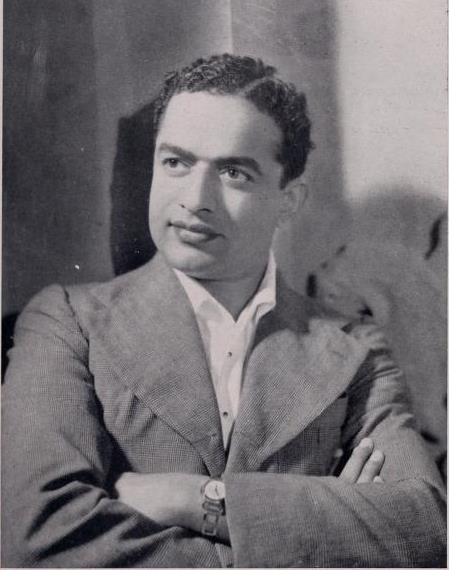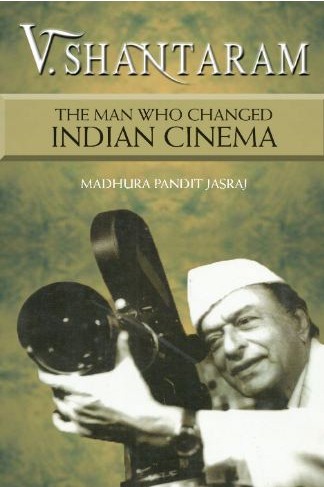Mahaveer Sanglikar
Introduction
V. Shantaram (Shantaram Rajaram Vankudre) was a prominent and legendary Indian film producer, director, filmmaker, and actor. He produced and directed many great movies in Hindi and Marathi, and appeared as an actor in many of them.
V. Shantaram was born on November 18, 1901, into a distinguished Jain family in the former princely state of Kolhapur, which is now part of Maharashtra, India. Throughout his life, he received recognition, including the prestigious Jain Samaj Ratna award, presented to exemplary members of the Jain community.
V. Shantaram’s Film Journey
V. Shantaram is celebrated for his notable contributions to cinema, including acclaimed works such as “Dr. Kotnis Ki Amar Kahani” (1946), “Amar Bhoopali” (1951), “Jhanak Jhanak Payal Baje” (1955), “Do Aankhen Barah Haath” (1957), and “Navrang” (1959).
In addition, his groundbreaking films “Duniya Na Mane” (1937) and “Pinjara” (1973) also left a significant mark on the cinematic landscape.
In 1927, V. Shantaram helmed his debut film, “Netaji Palkar,” and in 1929, he co-founded the Prabhat Film Company alongside V.G. Damle, K.R. Dhaiber, S. Fatelal, and S.B. Kulkarni. Under his direction, the company produced “Ayodhyecha Raja” in 1932, marking the first Marathi language film.
Departing from Prabhat in 1942, V. Shantarm established “Rajkamal Kala Mandir” in Mumbai, which evolved into one of the nation’s most advanced studios.
His Marathi film “Manoos” (English: Man) earned accolades from Charlie Chaplin, who reportedly admired the film greatly.
In recognition of his contributions, he received the prestigious Dadasaheb Phalke Award in 1985 and was honored with the Padma Vibhushan in 1992 for his significant impact on the Indian film industry.
Six Decades in Cinema ….
V. Shantaram embarked on his cinematic journey by undertaking various tasks at Maharashtra Film Co., owned by Baburao Painter in Kolhapur. His initiation into acting occurred with the silent film “Surekha Haran” in 1921.
Over nearly six decades, V. Shantaram carved an illustrious path in filmmaking, transitioning from acting in silent films to directing Hindi and Marathi cinema. A pioneer in recognizing film’s potential for social transformation, he adeptly utilized the medium to champion humanism while confronting prejudice and injustice.
In recognition of his remarkable contributions, he received the prestigious Dadasaheb Phalke Award in 1985, the highest honor in the Indian film industry for lifetime achievement. Additionally, he was bestowed with the Padma Vibhushan award in 1992.
His memoir, “Shantaram,” published in both Hindi and Marathi, offers a glimpse into his extraordinary journey in the world of cinema.

Family Life
V. Shantaram had three marriages. His first was to Vimla, followed by his second marriage to the actress Jayashree. From this union, he had three children: Tejasri, Rajshree (whom he introduced in the film Geet Gaya Patharon Ne), and a son named Kiran Kumar, who later served as the sheriff of Mumbai and pursued a career as a Marathi film director.
His third wife was the actress Sandhya, who co-starred with him in Do Aankhen Barah Haath and was the leading lady in his films such as Jhanak Jhanak Payal Baaje and Navrang. Shantaram had four other children: Prabhat Kumar, Sarojini, Charushila, and Madhura Pandit. Madhura Pandit is married to the classical singer Pandit Jasraj, and they have a daughter, the actress Durga Jasraj.
V. Shantaram passed away on October 30, 1990, in Mumbai. Following his demise, the ‘V. Shantaram Award’ was established jointly by the Central Government and the Maharashtra State Government. Additionally, the V. Shantaram Motion Picture Scientific Research and Cultural Foundation was founded in 1993 in his honor. This foundation bestows various awards to filmmakers, with the presentation ceremony taking place on November 18 each year, coinciding with Shantaram’s birth anniversary.
Awards Won by V. Shantaram
1957: Filmfare Best Director Award: Jhanak Jhanak Payal Baaje
1958: National Film Award for Best Film: Do Aankhen Barah Haath
1958: Berlin International Film Festival, OCIC Award: Do Aankhen Barah Haath 1958: Berlin International Film Festival, Silver Bear (Special Prize): Do Aankhen Barah Haath
1959: Golden Globe Awards, Samuel Goldwyn Award: Do Aankhen Barah Haath 1985: Dadasaheb Phalke Award
1992: Padma Vibhushan
Nominations
1951: Cannes Film Festival, Grand Prize: Amar Bhoopali (The Immortal Song)
1958: Berlin International Film Festival, Silver Bear: Do Aankhen Barah Haath
He also introduced film actor Jeetendra in Hindi cinema with the film Geet Gaaya Patharonay.
V. Shantaram Autobiography and Biographies
Autobiography
Shantaram (Marathi, Hindi)
Biographies:
Shantaram, Kiran & Narwekar, Sanjit; V. Shantaram: The Legacy of the Royal Lotus, 2003, Rupa & Co., ISBN 8129102188.
Banerjee, Shampa; Profiles, five film-makers from India: V. Shantaram, Raj Kapoor, Mrinal Sen, Guru Dutt, Ritwik Ghatak Directorate of Film Festivals, National Film Development Corp, 1985. ISBN 8120100077.
Madhura Pandit Jasraj: V. Shantaram The Man Who Changed Indian Cinema

Documentaries
V. Shantaram: The Pioneering Spirit by Film Division
More Articles…..
Influence of Jainism on Mahatma Gandhi | Gandhi & Jainism
The Secrets of the Prosperity of Jain Community
Barrister Virchand Gandhi: A Bridge Builder Among Faiths
Shah Rukh Khan: The Richest Indian Actor: What Are His Income Sources?
Jain Mission
Online Hindi Magazine
TheyWon
English Short Stories & Articles

5 thoughts on “V. Shantaram: His Legend and Achievements”